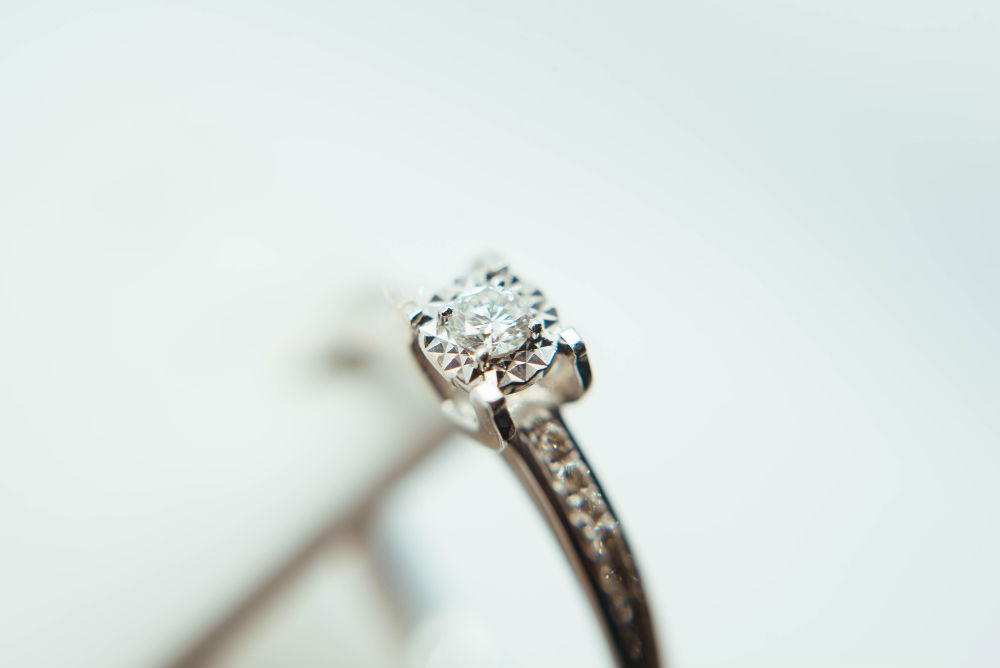When it comes to buying your perfect diamond engagement ring, there is a lot to consider. Among those things are the 4 C’s of diamond grading. These aspects are important when you are shopping for a ring as you want to ensure that you are getting exactly what you’re paying for and that the diamond is truly worth it.
What are the 4 C’s of Diamond Grading?
The 4 C’s of diamond grading refers to the respective characteristics of a diamond. A grade is based on the stone’s cut, carat weight, color and clarity. Overall, these four aspects contribute to a diamond’s beauty and makeup.
There are varying levels of quality in each of the 4 C’s of diamond grading. Some of these are not visible to the naked eye. However, it’s important to understand how to distinguish each of the characteristics so that you can ultimately choose the perfect engagement ring. It can help you to avoid overspending when you are on a budget.
Diamond Cut
The cut of a diamond relates to the quality of the gem’s angles, facets, brilliance and more. It can determine the ability of the gem to sparkle and shows the general aesthetic appearance of the diamond. There are several grades of a diamond’s cut, according to the GIA: ideal, excellent, very good, good, fair and poor. Ideal and excellent are based on the specific shape of the diamond and take into account the angles and proportions that offer brilliance and fire.
Depending on the diamond itself and the diamond cutter, the cut can vary. Often, a cutter might opt for the stone to have maximum carat weight whether it’s a necklace, ring or other piece of jewelry being crafted, which results in the gem being either too shallow or too deep for the best light reflection. In some cases, there may be cuts that account for better clarity but the sparkle is overlooked.
Diamond Carat Weight
Many people have the misconception that “carat” refers to the size of the diamond. In reality, it relates to the diamond’s weight. If a diamond weighs one carat, it equals 0.2 grams, which is essentially the same as one-quarter of a raisin. However, depending on the cut and shape of the gem, diamonds weighing one carat can be of varying sizes.
Carat weight is generally not the most important characteristic when choosing a diamond engagement ring. The appearance and brilliance of the stone should be of higher priority. Some women even like to match their ring with a favorite bracelet or earrings.
Diamond Color
When considering the color of the diamond, the focus is on how clear or white it appears. Color grades for diamonds range from D to Z according to the GIA. D is essentially colorless, while Z has a slightly yellowish or brownish hue.
The color of a diamond also dictates its price. Generally, the naked eye is unable to see a difference between two colors that are one step away. However, the price can be significantly different. Additionally, it’s important to consider whether the tint of a diamond adversely affects its reflective abilities.
It’s important to note that certain diamonds are colored and are different from the standard white diamonds. Their color grades are very different.
Diamond Clarity
The clarity of a diamond takes into consideration how clean it is and includes any imperfections and inclusions. There are several grades for clarity, which include the following:
- FL stands for “flawless”
- IF stands for “internally flawless”
- VVS1 stands for “very, very slightly included 1”
- VVS2 stands for “very, very slightly included 2”
- VS1 stands for “very slightly included 1”
- VS2 stands for “very slightly included 2”
- SI1 stands for “slightly included 1”
- SI2 stands for “slightly included 2”
- I1 stands for “inclusions 1”
- I2 stands for “inclusions 2”
Depending on certain factors, including the darkness, location and size of blemishes or inclusions in a diamond, there may be an interference in the way light can pass through the gem. This can result in the diamond’s beauty being reduced and the quality of its cut being diminished.
When you know what to look for in a diamond, you can find the perfect engagement ring for that special day. Contact us for more information on choosing the best diamond!
